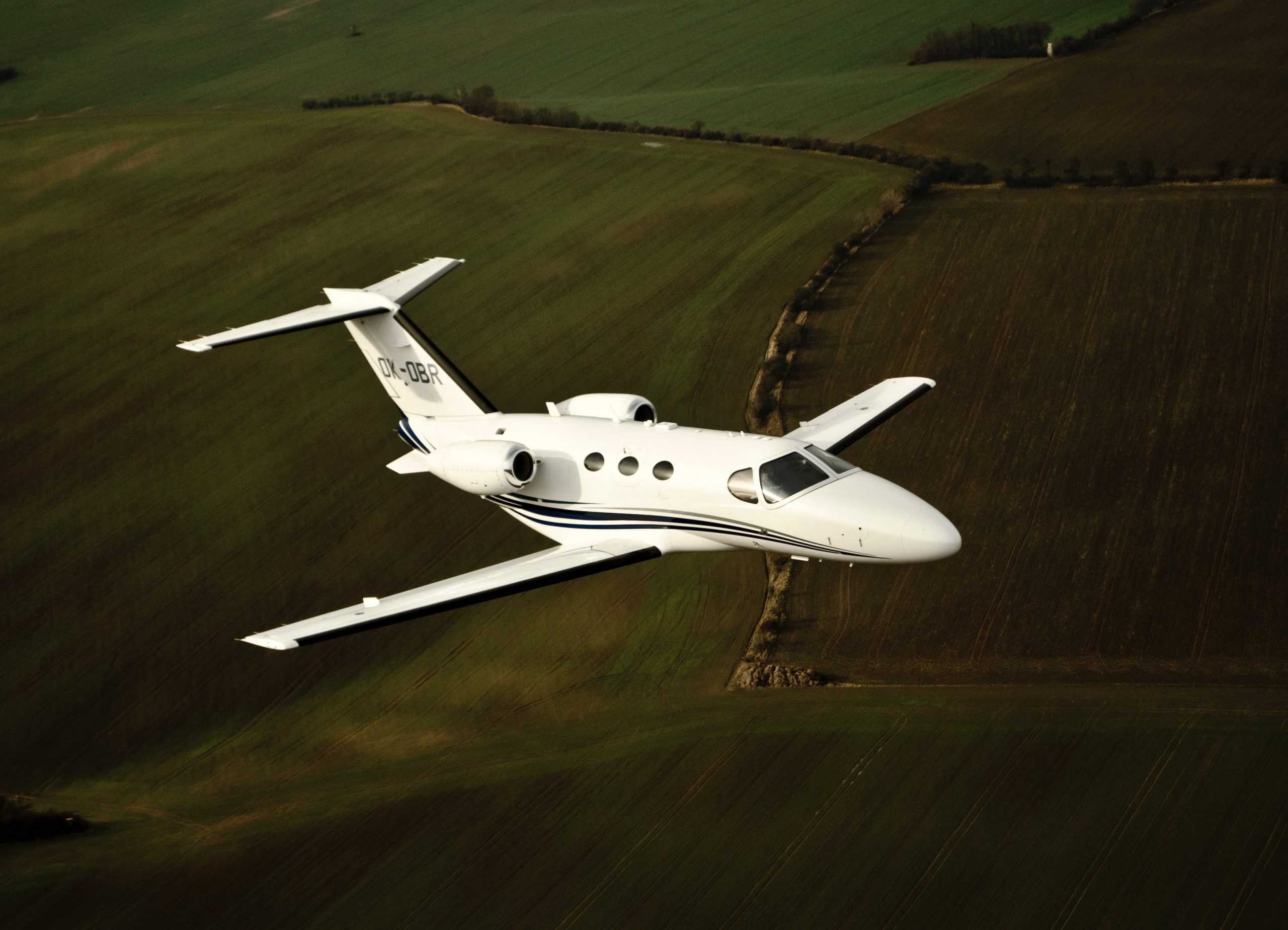Continuing our Subject Matter Expert Series, we connected with Rodrigo Lima, SKYTRAC’s Director of Business Development, who focuses on Business Aviation, to discuss his knowledge and background in aviation. With shy of 20 years of experience within the aviation industry, Rodrigo shares his in-depth understanding of the complexities of fleet management, how business aviation continues to tackle challenges, what capabilities are in demand, and more.
What is your educational background?
I attended Centro Federal de Educação Tecnológica Celso Suckow da Fonseca, also known as CEFET, from 1998 to 2002, earning a Manufacturing Engineering degree. From there, I spent several years working in oil and gas sales. I sold for various major IOCs, such as Shell, BP, and Petrobras, Brazil’s major oil and gas provider.
Driven to expand my sales knowledge, I returned to school in 2004 to pursue a Master of Business Administration degree. With a specialization in Marketing, I successfully completed my degree at FGV – Fundação Getulio Vargas in 2006. Armed with my MBA, I transitioned into various sales roles within the oil and gas industry, leveraging my previous experience. This diverse experience eventually led me to my first role in aviation as a sales manager with CHC Helicopters, marking a significant milestone in my career.

Can you share with me what drew you to aviation?
While my career was primarily in oil and gas, my time at CHC was a transformative experience, introducing me to the dynamic world of aviation, particularly within the oil and gas sector. The six years I spent at CHC not only broadened my horizons but also ignited a deep passion for aviation and its intricacies. This newfound respect for the industry eventually led me to SKYTRAC, where I started as a LATAM Sales Manager and now hold the position of Director of Business Development, specializing in Business Aviation.
What is your subject matter expertise?
My tenure at CHC provided me with a comprehensive understanding of general aviation. I had the privilege of working with both rotorcraft and fixed-wing airframes, navigating challenging environments to transport people safely. With over 45 helicopters in Brazil alone, making three, sometimes four, flights a day, I honed my skills in ensuring safety across all these aircraft.
My journey in aviation has been a continuous learning process, and my expertise in general aviation paved the way for me to work alongside industry leaders like Ray Larkin. Under his guidance, I not only gained invaluable insights into business aviation but also became a recognized expert in this vertical, a testament to the growth and development I’ve experienced in this field.
Ray was an amazing support and shared all his knowledge and information with me during his time as my mentor.
Rodrigo Lima
How long have you been involved in this subject matter, and how did you get involved?
I’ve been involved with business aviation for the past year. At Ray’s request, I stepped into this role alongside him. Ray and the SKYTRAC sales team knew I already had a strong foundational knowledge of what is required by business aviation and knew I could excel in this area.
As someone very passionate about sales, this role has allowed me to work with major OEMs such as Textron and Gulfstream. It’s allowed me to get involved with all business aviation customers with varying needs and expectations from their satcom service provider. It has been a pleasure leading the business aviation unit towards providing more comprehensive solutions for our customers.

What excites you about this sphere of aviation?
Many aspects of business aviation excite me. The industry is very mature and has a good sense of itself and what it seeks from manufacturers like SKYTRAC. Despite that, it is also a fast-paced and dynamic environment that looks to innovate and be at the forefront of new development.
Another aspect I appreciate is the global nature of this segment. Business aviation is an internationally connected network with many diverse customers’ needs. In this industry, I have the chance to deliver exceptional experiences that benefit the customer.
While business aviation is a mature industry, it is still very dynamic and fast-paced with a desire to be at the forefront of innovation and technology, which really excites me.
Rodrigo Lima
What is business aviation’s value to other industries, people, and society?
I believe business aviation provides value to other industries, people, and society in various ways. Firstly, I would say it benefits time. Business aviation allows for travel efficiency for executives, professionals, and others who utilize it to travel directly to their destinations. This allows them to avoid the time-consuming process of commercial airports.
Secondly, business aviation provides accessibility and flexibility. Many may not consider that certain airports, regions, and environments cannot be reached by aircraft other than business aviation crafts. This includes remote locations that do not have the commercial draw but still have people living in those regions who need transportation.
Finally, business aviation generates substantial economic activity that contributes to the general aviation market. This allows the general aviation market to grow, adapt, and develop innovations alongside business aviation aircraft. It helps make new technologies adaptable for various segments.
What challenges is this segment confronted with today or has been in the past?
One of the main barriers to business aviation is the cost of owning, operating, and maintaining a private aircraft. It is expensive to purchase a business aircraft, let alone operate one, and even then, the environment is highly regulated. Like regional airlines, there are administrative considerations, operational efficiencies to handle, and safety and security standards to be met.
Business aviation operators must tackle these issues and ensure their aircraft is up to date with regulatory requirements, which adds extra cost to them. Safety and security are paramount concerns for business aviation operators and passengers, so solutions must be high-quality and affordable. This results in them requiring streamlined, adaptable, and agile solutions that do not add excessive features that raise costs.
Another challenge in this industry that has gained further exposure in recent years is the environmental impact of business aviation. There is more of a push for business aviation operators to mitigate carbon emissions. This also ties into the cost, as carbon emissions are tied to the operator’s fuel consumption, so lowering emissions can benefit an operator’s bottom line as well.
How does SKYTRAC help tackle those challenges?
SKYTRAC helps tackle these challenges in several ways. By offering lower-cost options for cutting-edge technology, our solutions, and services are streamlined to create benefits for business aviation operators. We offer a variety of solutions that can ensure efficiency, automation, and safety.
The leading solution we offer that helps tackle many of these issues is our Safety Services. This service will assist operators in ensuring they meet regulatory requirements and help tackle operational efficiencies. An example of how this service can benefit operators is how it provides route optimization that helps ensure fuel consumption is at its lowest. This will not only benefit the environmental impact but also the fuel spending of an operator.
SKYTRAC helps operators gain operational efficiency and environmental sustainability with its solutions.
Rodrigo Lima
What capabilities are in demand in this segment?
I believe a few capabilities are in demand in this segment. The first that comes to mind would be high-speed in-flight connectivity. These days, both passengers and pilots expect to be able to stay connected mid-flight. In-flight connectivity is important whether an operator wants to gain EFB updates or passengers wish to communicate with friends or family.
Another would be safety and situational awareness. Capabilities such as advanced API, data analysis, and real-time flight monitoring are all important features that business aviation operators seek. All these directly benefit the safety and operational aspects of business aviation.
The final capability in demand would be using integrated systems and automation. Operation through integrated systems and automation helps reduce workload and enhance efficiency. Automation can be applied in various capacities for business aviation, such as aircraft data downloading for other third-party maintenance software.
What future trends do you see that will impact business aviation?
The trend toward artificial intelligence (AI) provides great opportunities for growth in business aviation and aviation in general. It allows us to improve automation for operational efficiencies, safety and security, and passenger experience. As AI continues to be built into the framework of our technology, I imagine there will be innovations.
Another trend that continues to grow in business aviation is in-flight connectivity. While this is not a new trend, the nature of in-flight connectivity continues to change by introducing new, better, and stronger connectivity options. Connectivity services such as Iridium Certus, internet, cellular, and other base satellite services create regulatory changes that impact operators. New trends emerge with new legislation, such as FANS and Safety Services entering the market.
Finally, I think the growth of the Urban Air Mobility segment is hard to ignore. The introduction of short-range aircraft will impact business aviation in some way, but it is not yet clear how until these air taxis enter the airspace. While these airframes are only meant to go short distances, they will still tie into the aviation ecosystem in some capacity, which may impact how airspace and technology are regulated.
What SKYTRAC capabilities are you most excited about introducing to the industry?
SKYTRAC offers the aviation industry a variety of capabilities. In addition to Flight Data Monitoring, Automated Flight Following, and SATCOM, SKYTRAC also offers aircraft connectivity and light IFE for VIP passengers. However, what excites me the most is the launch of the truly global SDL-350 satellite communications terminal, which offers up to 704 kbps of bandwidth.
How do you keep connected on this segment’s latest trends and regulations?
My favourite way to connect with the business aviation segment is by attending industry conferences and events such as NBAA-BACE and AEA. Connecting at these large events is a wonderful way to see firsthand what trends and desires are in the business aviation industry. Another important one is being a part of organizations like NBAA, AEEC, and other regulatory bodies. Finally, I follow industry publications and connect with online communities, such as through LinkedIn, to see what is happening in the business aviation segment.
We want to thank Rodrigo for speaking with us and sharing his knowledge and expertise in business aviation. If you wish to connect with Rodrigo as he continues to lead the business aviation unit at SKYTRAC, utilize the form below or connect with him at AEA 2024 from March 19th to 21st or NBAA 2024 from October 22nd to 24th.
Get in Touch
Speak with a connectivity expert today. We are eager to discuss your business needs.

